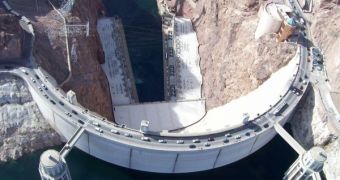The recent Russian incident, in which several people were killed in an explosion that took place inside a Soviet-era dam, has again brought into highlight the challenges facing dams in the US as well. With most of them older than half a century, these constructions are right now beginning to show signs of fatigue, and endanger thousands of people living below their floodgates. If when they were first constructed they posed no danger at all, because they were built in remote areas, this is no longer the case. Sprawling cities and development areas are located near most of the large ones, Wired reports.
According to the latest report released by the American Society of Civil Engineers, the 140 dams that were repaired last year were replaced in 2009 by about 368 others, which need large-scale repairs. In this year's report on the state of the country's infrastructure, US engineers gave dams as a category a “D,” because of the massive risks they posed to the civilian population living downstream. They would also deprive the nation of a large part of its electricity, if they were to go offline.
“With the huge number of dams getting older every day, it’s becoming a bigger and bigger problem. The policing of maintenance and filing of inspection records is relatively haphazard, not because of lack of focus or knowledge of significance, but they just don’t have the monetary resources to do it,” ASCE Deputy Executive Director Larry Roth explains. He says that about $16 billion would be needed to repair all of the nearly 10,000 high-hazard dams. At this point, the total budget for such repair works is of $60 million. In Alabama, they have no such funds at all.
One of the main issues, authorities say, appears with privately owned dams. Their managers risk the lives of their workers, and of people living below the accumulation lakes, by not investing in repair works and in new equipment. There is a striking difference between these constructions and those owned by the government. The Bureau of Reclamation has, for example, about 350 dams in its custody, which are constantly repaired and upgraded. “Most of the dams that are hydroelectric are generally well-inspected and well-maintained. It would be safe to say that most of our hydroelectric dams are safe in the US,” Roth says.
It is very probable that authorities will not do anything about the growing threat. There is no money to spare on such projects, and the states cannot interfere with private owners. It will most likely take an unfortunate tragedy before something is done with the dams, in spite of these early warnings.

 14 DAY TRIAL //
14 DAY TRIAL //